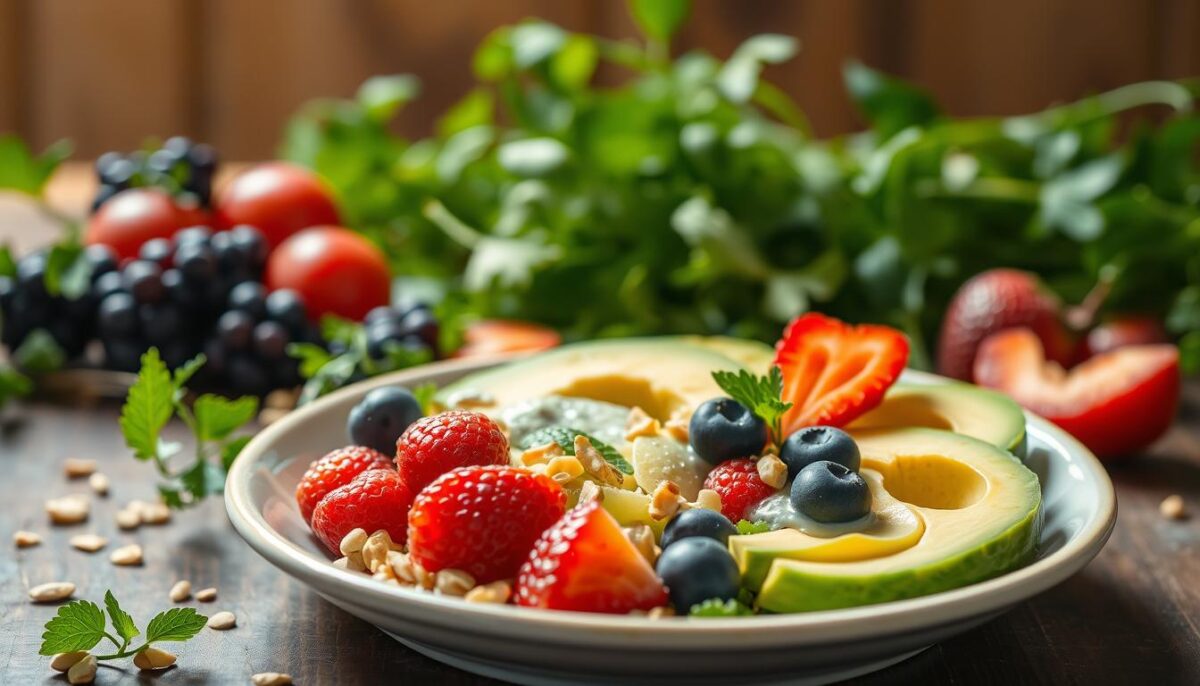
5 Unmissable Food Stops When Visiting San Francisco
June 14, 2025
How to Increase Your Child’s Height: Nutrient-Rich Foods You Must Try
June 15, 2025Last winter, my little one caught every bug that went around daycare. Then our pediatrician said something that changed everything: “What’s in their lunchbox matters more than you think.” After swapping sugary snacks for vibrant veggies and citrus, I watched fewer sniffles turn into full-blown colds. Turns out, dinner plates can be superhero capes.
Did you know 70% of your body’s defense network lives in your gut? That’s right – the right meals don’t just fill tiny tummies. They build an invisible armor against germs. I’ve spent months geeking out over research (and testing smoothie recipes on my picky eater) to find which ingredients pack the biggest punch.
Red peppers, for instance, have triple the vitamin C of oranges. Spinach hides iron and folate like a ninja. Even ginger – that spicy root I once avoided – became our secret weapon. These aren’t just “healthy foods.” They’re nature’s way of supercharging white blood cells, those tiny soldiers fighting off invaders.
This journey taught me one golden rule: consistency beats perfection. A colorful plate today does more than a “perfect” meal once a week. Let’s explore how everyday grocery items can become your family’s frontline defense – without fancy supplements or battles over broccoli.
Key Takeaways
- Over two-thirds of the body’s natural defenses are linked to digestive health
- Vitamin-rich veggies like red peppers outperform citrus fruits for immune support
- Common kitchen ingredients can significantly increase protective white blood cells
- Daily nutrient intake matters more than occasional “perfect” meals
- Simple dietary swaps reduce frequency of seasonal illnesses
Understanding the Importance of Nutrition for Immunity
I used to think meal prep was just about filling lunchboxes. Then I discovered every bite shapes our body’s defenses. A pediatric nutritionist told me, “The right mix on a plate acts like daily training for disease-fighting cells.” That changed how I grocery shopped forever.
How a Balanced Diet Fuels Immune Function
Variety matters more than I realized. Combining colorful produce with whole grains creates a nutrient symphony. Vitamin C from strawberries teams up with zinc in nuts – like superhero partners battling invaders. Even picky eaters get protection when different food groups work together.
Processed snacks sabotage defenses. I learned this when swapping crackers for carrot sticks reduced winter sniffles. Whole ingredients provide raw materials for white blood cells. Think of broccoli florets as tiny shields being forged in little bodies.
My big aha moment? Consistency beats perfection. Three balanced meals daily do more than one “perfect” dinner weekly. Those orange slices at snack time? They’re not just sweet – they’re frontline reinforcements keeping defenses battle-ready.
Top Child Immunity Foods for a Strong Immune System
When my niece started kindergarten, her lunchbox became our secret weapon against classroom germs. Through trial and error, I discovered which ingredients made the biggest difference in keeping her energized and resilient.
Colorful Produce Powerhouses
Brightly colored options work overtime for wellness. Red bell peppers became our go-to – one cup delivers 3x the vitamin C of oranges. We rotate between these superstars:
- Blueberries (bursting with antioxidants)
- Steamed broccoli (packed with vitamin K)
- Sweet potatoes (loaded with beta-carotene)
Building Blocks Beyond Plants
Protein sources and good fats fuel the body’s defense systems. Grass-fed beef provides easily absorbed iron, while salmon delivers omega-3s that help regulate inflammation. Our favorite additions:
- Almond butter on whole-grain toast
- Avocado slices in turkey wraps
- Chia seeds blended into morning smoothies
I learned that combining these elements creates meals that protect. A stir-fry with lean chicken, snap peas, and cashews covers zinc, vitamin B6, and healthy fats in one dish. It’s not about perfection – just consistent, colorful choices that add up over time.
Incorporating Superfoods into Your Child’s Diet
When my nephew refused anything green, I discovered the magic of disguise. Blending spinach into pancakes and kale into smoothies became our game-changer. Superfoods don’t have to spark battles – just creativity.

Creative Meal Ideas for Kids
Transform picky eaters with these stealthy strategies:
- Sunshine Smoothies: Blend Greek yogurt with frozen mango and a handful of kale – the bright color hides greens while delivering probiotics
- Dragon Breath Stir-Fry: Sauté garlic and ginger with chicken strips, then add red peppers for a vitamin C punch
Snack Alternatives That Boost Immunity
Swap processed snacks with these nutrient-packed options:
| Snack Idea | Key Ingredients | Benefits |
|---|---|---|
| Yogurt Pops | Plain yogurt, berries | Probiotics + antioxidants |
| Power Balls | Oats, almond butter, chia seeds | Fiber + omega-3s |
| Crunchy Sticks | Carrot, cucumber, hummus | Vitamins minerals + plant protein |
I’ve found that small amounts of these foods throughout the day help boost defenses better than occasional large portions. My trick? Pair fruits vegetables with whole grains for lasting energy. Those colorful combos reduce sniffles by keeping nutrient levels steady.
Last month, we went three straight weeks without missed school days – a record since preschool began. Turns out, consistent superfood snacks might just be the secret weapon against seasonal illnesses.
Strategies to Integrate Immune-Boosting Foods at Home
Juggling work deadlines and after-school activities used to leave my fridge embarrassingly empty. Then I discovered strategic meal planning – the game-changer that keeps our bodies fueled with protective nutrients. A pediatric nutritionist friend shared this golden rule: “Consistent nourishment beats last-minute takeout every time.”
Smart Prep for Hectic Schedules
Sunday afternoons became my secret weapon. Chopping veggies and pre-cooking quinoa ensures quick assembly all week. This routine helps cells get steady fuel to fight invaders. I stash chia seeds in oatmeal and smoothies – their fiber keeps little bellies happy and gut bacteria thriving.
My go-to weekly template balances convenience and nutrition:
| Meal | Key Ingredient | Benefit |
|---|---|---|
| Breakfast | Greek yogurt + berries | Probiotics + antioxidants |
| Snack | Almonds + orange slices | Vitamin C + zinc |
| Dinner | Salmon + roasted veggies | Omega-3s + fiber |
According to trusted source USDA guidelines, this approach lowers risk of flu by maintaining nutrient levels. I keep washed produce at eye level – colorful reminders that nourish the body while saving time. Bonus? Fewer grocery store meltdowns when hungry tummies strike.
The real magic happens in consistency. Three balanced meals daily build stronger defenses than occasional “perfect” plates. Those five-minute omelets with spinach? They’re doing more heavy lifting than I ever imagined.
Lifestyle Factors Enhancing Your Child’s Immune Health
When my toddler started resisting naps, I discovered an unexpected truth: bedtime battles impact more than just moods. Our pediatrician explained, “Rest fuels the body’s repair shop – where defense cells get their marching orders.” This changed how I viewed evening routines and playground time.

The Dynamic Duo: Rest and Movement
Consistent sleep schedules became non-negotiable. I learned that during deep sleep, the body produces specialized blood cells that patrol for germs. Missing just one hour reduces these warriors by 25% – now lights-out happens like clockwork.
Physical activity surprised me most. Our after-dinner bike rides do more than burn energy. Movement pumps blood faster, helping immune cells reach trouble spots quicker. Three ways this combo fights infections:
| Strategy | Action | Benefit |
|---|---|---|
| Sleep Power | 10-hour nightly target | Boosts germ-fighting proteins |
| Active Play | 60 mins daily movement | Improves pathogen detection |
| Fuel Mix | Spinach in smoothies | Provides iron for blood health |
Mealtimes got smarter too. Roasted bell peppers sneak into quesadillas, while spinach hides in berry shakes. These nutrient-packed additions help keep defenses strong between soccer practice and math homework.
The real game-changer? Syncing schedules. We use daylight for park runs and dim lights post-dinner. This natural rhythm regulation cut winter colds by half. Turns out, combining smart habits with good nutrition creates an unstoppable shield against infections.
Insights From Trusted Pediatric Sources
During a consultation with our pediatric nutritionist, I discovered how evidence-based eating shapes growing bodies. She flipped through color-coded charts showing exactly how nutrients become disease-fighting tools. “Food isn’t just fuel,” she explained. “It’s coded instructions telling cells how to protect themselves.”
Science-Backed Kitchen Staples
Top experts emphasize three powerhouse categories for daily meals. Broccoli leads the pack – its sulforaphane content activates antioxidant genes. I now steam florets twice weekly after learning this cruciferous veg boosts protective enzymes by 40%.
Sunflower seeds became our pantry staple for vitamin E. A handful sprinkled on oatmeal provides 50% of daily needs. Our nutritionist shared this crunchy snack helps maintain communication between defense cells – crucial for coordinated germ battles.
| Recommended Product | Key Nutrients | Daily Benefit |
|---|---|---|
| Whole grain pasta | Fiber + B vitamins | Supports gut barrier function |
| Greek yogurt | Probiotics + protein | Enhances microbial diversity |
| Broccoli sprouts | Sulforaphane | Activates detox enzymes |
| Sunflower butter | Vitamin E + magnesium | Improves cell signaling |
When selecting products, I follow this expert-approved method: Check labels for live cultures in yogurts and 100% whole grains in breads. Reputable sources like the AAP suggest avoiding “enriched flour” claims – true whole grains list the grain first.
For parents ’re looking to simplify, our nutritionist offered this rule: “If it grew in soil or grazed on grass, it’s probably helping.” This approach transformed how we shop – focusing on minimally processed items that naturally contain what tiny bodies need to thrive.
Conclusion
After my friend’s twins started preschool, their snack swaps became our neighborhood’s secret weapon. We discovered diverse foods work best when paired with smart habits – no single fix exists. Those rainbow veggie trays and ginger-spiked smoothies? They’re building natural defenses through steady nourishment.
This journey taught me three truths. First, gut health is ground zero – feed it fiber-rich picks like oats and berries. Second, variety trumps perfection – rotating colorful ingredients ensures broad nutrient coverage. Finally, immunity thrives on consistency – small tweaks stack up over time.
Our greatest success came from mixing strategies. Playtime sunshine pairs with salmon dinners. Bedtime routines sync with garlicky stir-fries. “It’s not about one superfood,” our pediatrician reminded us. “It’s the chorus of habits that strengthens immunity.”
Start where you are. Try one new recipe packed with immune-supporting foods this week – maybe zucchini muffins with hidden spinach. Notice how simple shifts create ripples. I’m still learning, but our kitchen now whispers “protection” with every meal prep.
Hungry for more? Explore trusted guides on building resilience through everyday choices. Your family’s wellness journey begins at the next grocery stop – let’s fill that cart with purpose.
FAQ
What’s the easiest way to add more vitamins to my kid’s meals?
I blend colorful fruits like strawberries or mango into smoothies and sneak veggies like spinach into pasta sauces. Bell peppers and broccoli are great raw with dips, too—they’re packed with vitamin C and antioxidants!
How do healthy fats help fight off infections?
Foods like avocado, sunflower seeds, and salmon contain omega-3s and vitamin E, which support cell function. I add these to salads or whole-grain toast to help their body respond better to germs.
Can sleep really impact how well their body handles colds?
Absolutely! I prioritize a consistent bedtime routine because quality sleep helps produce infection-fighting cells. Less screen time before bed and a dark room make a big difference during flu season.
Are there quick snacks that actually boost defenses?
Yes! I swap chips for yogurt with berries (rich in probiotics) or almond butter on apple slices. Pumpkin seeds and dark chocolate-covered almonds are also tasty sources of zinc and magnesium.
Why is gut health linked to fewer illnesses?
A balanced gut microbiome strengthens the immune system. I include fermented foods like kefir or sauerkraut in small amounts and focus on fiber-rich options like oats and lentils to keep their digestion thriving.
How much protein do they need for strong immunity?
I aim for lean meats, eggs, or beans in every meal. For example, turkey meatballs or chickpea stir-fries provide iron and zinc—minerals that help white blood cells combat bugs effectively.



